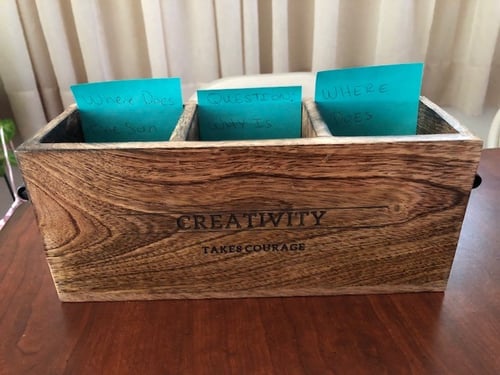When it comes to topics in education, STEM always tops the list. As a parent, you’ve likely seen or heard this acronym many times.
Encouraging your child to explore the fields of Science, Technology, Engineering, and Math is becoming more important than ever before, and doing so is probably easier than you think.
Why STEM Matters
What’s all the fuss about STEM education? First, STEM jobs are projected to grow 13 percent through 2027, whereas non-STEM jobs are only likely to see a 9 percent increase.
More importantly, the salary of STEM jobs, around $87,500 annually, is significantly higher than those of non-STEM occupations. (iDTech)
As you can see, preparing your child for a future in the ever-changing technological world can make a significant impact on their livelihood later in life. That’s one reason schools are enriching their curriculum with programs to help students develop STEM skills.
As a parent, it’s also important to think about how you can help your child incorporate STEM skills into their home life. We’ve compiled some simple ideas to help you get started.
Encourage Exploration
One easy way to bring STEM into your home is to encourage curiosity and problem solving in your child. By encouraging the art of questioning, you’ll help your child to develop the skills to think through a problem to come up with a possible solution. Here are a few examples:
 What do you think might happen if…?
What do you think might happen if…?
 How does this work?
How does this work?
 What do you notice?
What do you notice?
 What changes when…?
What changes when…?
Remember, it doesn’t matter if they don’t come up with the right answer. In fact, it’s better if they don’t. Failure will allow your child to learn from mistakes and will teach them to investigate and evaluate information to make informed decisions. When you stop to think about it, these are skills that scientists use every day.
Create a Question Box
Kids are great at asking questions. In fact, you probably get questions all day long. Sometimes, those questions can be big and hard to answer on the fly.
For example, “Why does the sun go up and go down?” may not be something you’re prepared to answer while driving to grandma’s house.
Consider creating a question box for moments like this. Take a minute to write down tough questions and place them in the box. Doing so will give you some time to read the question, do a little research, and decide the best way to help your child discover the answer.

For this example, there are many ideas online for astronomy demonstrations you can complete at home. You can use a ball (to represent the Earth) and a lamp (to represent the Sun). Use the ball to show how the Earth moves around the sun. This easy, hands-on demo can help your child to understand these simple facts.
1. The Earth moves around the Sun; the Sun does not move around the Earth.
2. We do not see the Sun all the time, which is why we have night. When we can see the Sun, it is daytime.
If your child is old enough, take time to show them how to do an Internet search to find credible information. You can also have them help you do an online search to find answers to what’s in the question box.
For questions about the moon, try using our video interactive learning object below.

There are many kid-friendly search engines available online, such as Kiddle, which is powered by Google. If the question your child asked presents a problem, they can work through it to find a solution, use the opportunity to collect the materials, set up a clean work space, and work with your child to solve the problem together.
Encourage Building
Encouraging your child to build is another easy way to incorporate STEM activities at home. Building allows your child to test out ideas. It gives them an opportunity to be creative, and it helps them to improve their spatial reasoning. It can also improve hand-eye coordination and motor skills.
Give your child challenges such as the following:
 Build using one color.
Build using one color.
 Build using one shape.
Build using one shape.
 Build a space for a toy animal.
Build a space for a toy animal.
 Build the highest structure you can (and when it falls, ask them what they could do differently to build it higher the next time).
Build the highest structure you can (and when it falls, ask them what they could do differently to build it higher the next time).
 If your child starts to struggle, encourage them to problem solve on their own. Ask helpful questions such as, “What went wrong?” or “How can we fix it?”
If your child starts to struggle, encourage them to problem solve on their own. Ask helpful questions such as, “What went wrong?” or “How can we fix it?”
Most importantly, don’t forget to have fun! Once you get started, you’ll be surprised to see how easy it is to incorporate STEM activities at home.
Do you have more ideas to help children practice STEM skills at home? We’d love to hear from you! Please share your ideas by adding a comment below.
 Amanda Bshero is the Lincoln Learning Solutions Instructional Services Manager of the Science Department and has been teaching with Lincoln Learning Solutions for six years. She has worked in the field of education for 11 years. Amanda enjoys spending time with her family and creating items by knitting or crocheting.
Amanda Bshero is the Lincoln Learning Solutions Instructional Services Manager of the Science Department and has been teaching with Lincoln Learning Solutions for six years. She has worked in the field of education for 11 years. Amanda enjoys spending time with her family and creating items by knitting or crocheting.



 If your child starts to struggle, encourage them to problem solve on their own. Ask helpful questions such as, “What went wrong?” or “How can we fix it?”
If your child starts to struggle, encourage them to problem solve on their own. Ask helpful questions such as, “What went wrong?” or “How can we fix it?” Amanda Bshero is the Lincoln Learning Solutions Instructional Services Manager of the Science Department and has been teaching with Lincoln Learning Solutions for six years. She has worked in the field of education for 11 years. Amanda enjoys spending time with her family and creating items by knitting or crocheting.
Amanda Bshero is the Lincoln Learning Solutions Instructional Services Manager of the Science Department and has been teaching with Lincoln Learning Solutions for six years. She has worked in the field of education for 11 years. Amanda enjoys spending time with her family and creating items by knitting or crocheting.